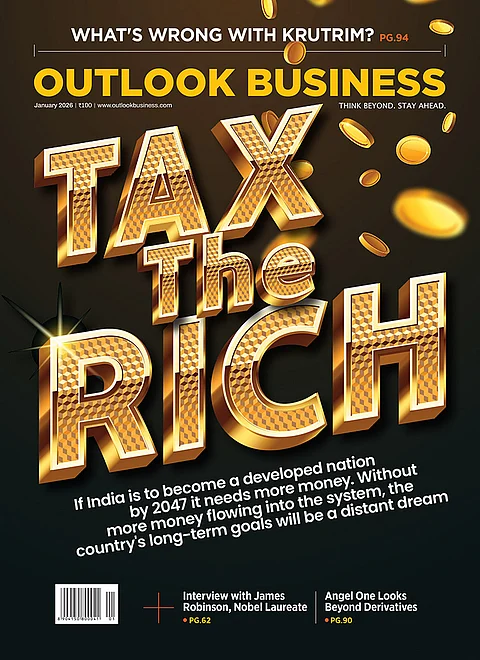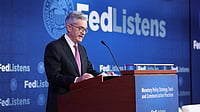Sailing through persisting global uncertainties around Trump’s reciprocal tariff plans and a deepening US-China trade war, foreign institutional investors are seen shifting focus towards India in recent days. After extensively dumping Indian equities in the period of market downturn which began in October last year, FIIs seem to be shifting gears, pouring in over $2 billion into the domestic bourses in the last five trading sessions.
In four trading sessions, between 15–21 April, FIIs pumped in $1.9bn into Indian stocks, as per data from NSDL. Adding to that, they bought domestic shares worth around $151mn on 22 April, according to provisional numbers from NSE, taking their total buying to over $2bn in just five sessions.
The massive FII buying also coincided with a near 4% surge in the Nifty 50 over the same period, wherein the benchmark reclaimed the 24,000-mark and the Sensex bounced back above the 80,000-milestone.
FIIs had briefly staged a comeback in the Indian equity market in the second half of March, however, that spree came to an end after Trump’s 2 April reciprocal tariff announcements, which triggered a rout across global financial markets. Between October 2024 and March 2025, FIIs were net sellers of more than Rs 2.33 lakh crore, a trend driven by stretched market valuations, muted earnings, and subdued economic growth.
That aside, the recent buying by FIIs has helped Indian benchmark indices not just recover losses from the 2 April fallout, but also become the only major market to trade higher than the levels seen pre-tariffs.
“Relatively, India has fared well as it is impacted less from trade war uncertainties. The market is also expecting a potential trade deal with the US in the near term and India is currently better prepared to gain from supply chain relocation. India’s macro is largely stable with additional benefit from falling commodity and oil prices,” brokerage firm Nomura said.
Analysts at UBS Securities also noted that while India was immune to the higher tariffs, it stood at a lesser risk than Asia's more open economies, making it a preferable bet for FIIs. “Compared with its regional peers, India is less exposed to global trade on the goods side and its services exports (currently around 47% of total exports) could provide a buffer against global trade disruptions,” UBS wrote.
The return of FII capital into Indian equities was also largely along expected lines, as market experts were anticipating the search for fresh avenues by foreign investors flocking out of US assets to find their way into India.
Escalating trade tensions between the US and China have led investors to pull back from those regions, prompting a strategic pivot towards European markets, emerging economies, and safe-haven assets such as gold.
Meanwhile, the freefall of the dollar index has also come as a boon for India, making investments in Indian assets more lucrative for FIIs. Usually, a weaker dollar, largely combined with easing interest rates, drives capital flows into emerging markets, as investors chase higher returns. The dollar has retreated from a January peak of 110 to now below 98, as investors flocked out of US assets amid recession fears.
In the face of that, cooled-down valuations of Indian equities after the recent market downturn, expectations of improved FY26 earnings and strong macro standing have worked in favour. “While the dollar index slumps to lower lows, another layer of uncertainty may attract more FII inflows into the domestic market in the near term,” believes Vinod Nair, Head of Research, Geojit Investments.
Analysts at Asit C. Mehta Investment Intermediates hold the view that the technical and valuation indicators point towards a bottoming out, creating conditions conducive for medium- to long-term equity outperformance of the Indian market.
Looking ahead, analysts also remain optimistic that this reallocation of FII money will continue into the Indian market. “We believe these inflows are sustainable and likely to continue. Investor interest is particularly strong in banking and financial services, capital market plays, defence, and consumer-facing stocks," said Devarsh Vakil, Head of Prime Research at HDFC Securities.
Furthermore, Ridham Desai and Nayant Parekh of Morgan Stanley also highlighted that India's correlation of returns with global equities has continued to decline and currently stands lower than historical levels.
“Weak global markets cap absolute returns, whereas a global bull market could coincide with relative underperformance for a low-beta market like India. Thus, India is significantly outperforming the current global selloff even while the index could reach multi-month lows,” Desai and Parekh said.




























